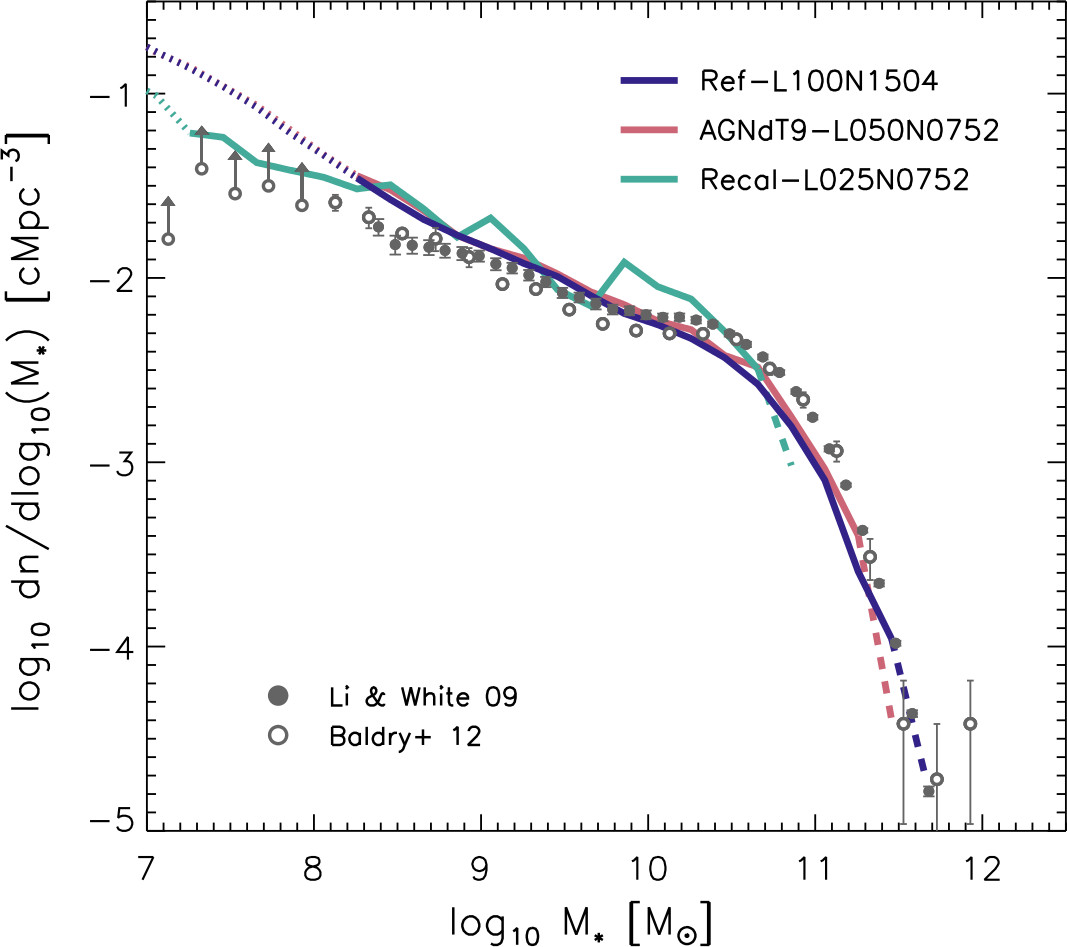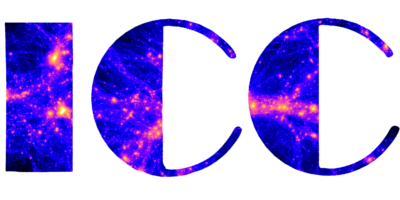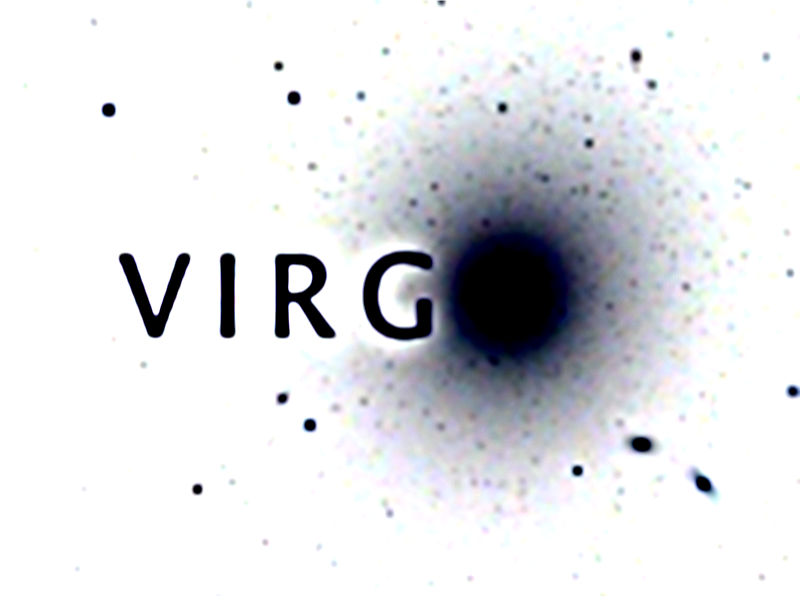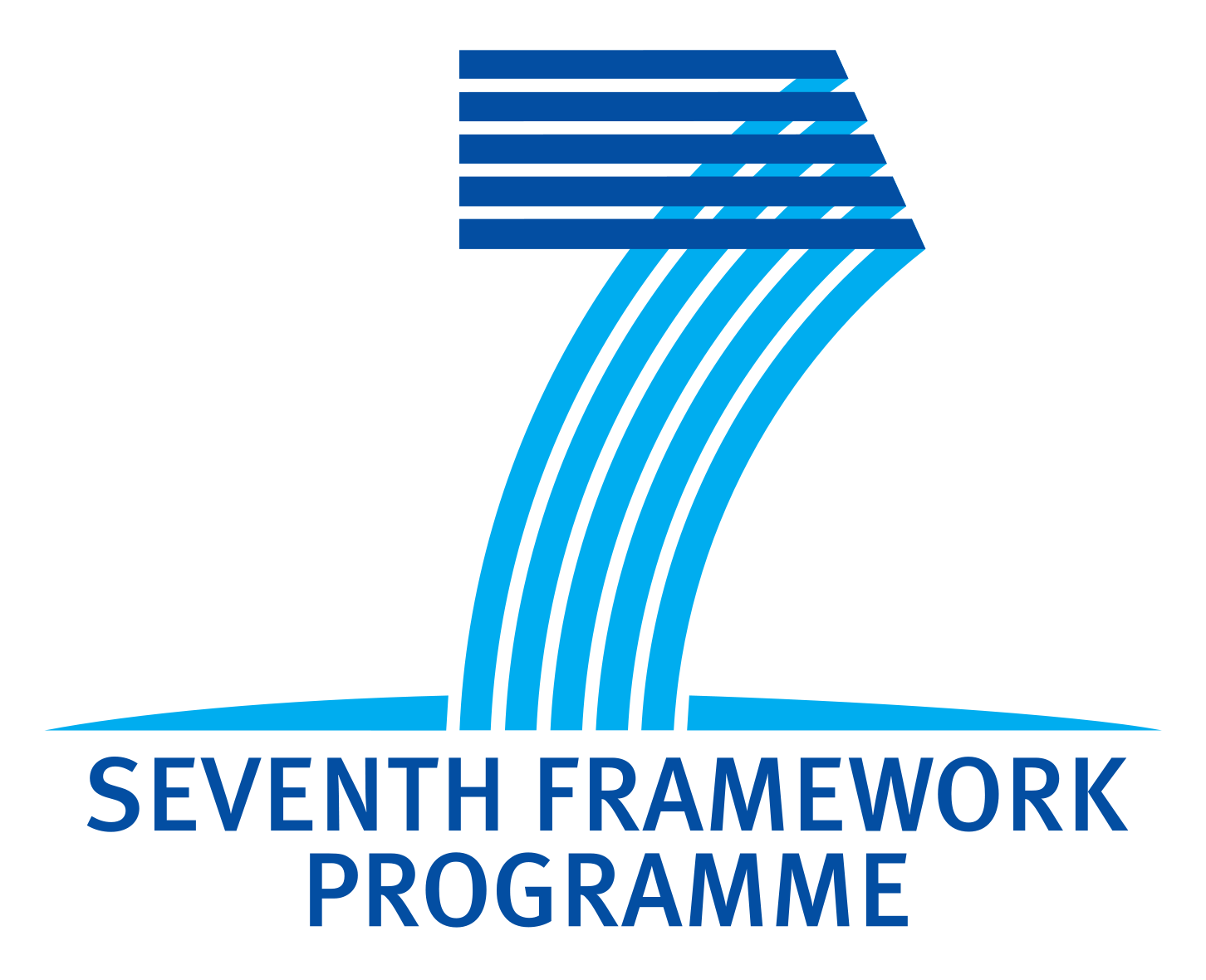In the fields of cosmology and galaxy formation theory, numerical simulations play a crucial role to help scientist discriminate between various models and guide observations. Since all astrophysical events occur on very long time scales and on very large distances, astronomers cannot really perform experiments to test their theories as chemists, biologists and engineers would do in their laboratories. The observations can only tell us what a given galaxy looks like now and not what it was like in the past. Numerical simulations must hence be used to see how stars or galaxies evolve over the history of the Universe. By creating multiple simulations with different physical theories, astrophysicists can, in principle, eliminate models that lead to a virtual universe different from ours. This process should then lead astronomers towards a better understanding of the physical processes at stake in galaxy formation.
One of the main issues that simulators face is the complexity of the processes that take place and the vast range of scales that are involved. For instance, black holes at the centre of galaxies will swallow gas within 0.01 pc but the energy produced by this process will affect the galaxy or even its host halo up to almost 1 Mpc, effectively spanning 8 orders of magnitude in spacial resolution. Despite the huge computing power available nowadays in the big national facilities, we are still very far from being able to simulate a representative region of the Universe (~100 Mpc) at the resolution required to precisely simulate all the processes that are thought to be relevant for galaxy formation. Simulators then resort to so-called "subgrid models" to implement the physical processes that cannot be resolved (simulated) due to the limited resolution. This technique of assuming a simple model to reproduce processes that are too small to be properly simulated is common to other areas of science, for instance turbulence or vortices are often simulated as subgrid models in simulations of air flows around cars or engines.
In the case of the EAGLE simulation, a resolution of 0.7 kpc is achieved (for the gravity), which lets us simulate the warm part of the gas within galaxies (ISM). For the processes occurring on smaller scales, we apply a series of physically motivated models, sometimes inspired by semi-analytic models. Our simulation includes:
- Cooling and heating of the gas due to the presence of stars and other emission,
- Formation of stars in cold and dense regions,
- Evolution and ageing of these stars,
- Distribution of the energy and metals (elements heavier than hydrogen) generated by the stars into the surrounding gas,
- Explosion of supernovae with injection of their energy in the surrounding gas,
- Formation of supermassive black holes,
- Accretion of gas onto the black holes,
- Ejection of energy due to this accretion process.
These subgrid models are all described by parameters whose values are either constrained directly by observations (the evolution of stars is a good example) or have to be calibrated. For instance, the accretion of gas onto black holes and the ejection of energy that is induced are still poorly understood theoretically and are anyway occurring on scales too small for our simulation. We hence have to calibrate the parameters used in this particular model such that the effect of the energy injection on the galaxies is reasonable. We know observationally how many galaxies of a given mass there are in the Universe. We can hence use that information to make sure our model parameters lead to a virtual universe that contains the right amount of galaxies of a given mass. In the case of energy injection from black holes, if the effect is not strong enough, there will be too many big galaxies, conversely, if the effect is too strong, there won't be enough of them. The same applies to the injection of energy by supernovae which are one of the dominant mechanisms for the formation of smaller galaxies.

On this figure, the black and white dots represent two different censuses of the number of galaxies of a given mass (x axis) in the Universe. The three coloured lines show the same galaxy count for our EAGLE virtual universe, with our main simulation being the blue line. The goal of the EAGLE project was to obtain a simulation set up (a series of parameters of the subgrid model) that leads to a good agreement between the observational data and the simulation. Other diagnostics plots where used to assess whether the galaxies are growing at the right rate and whether they end up having the right size.
Now, that we have obtained that reasonable-looking Universe, we can go back to the simulation and look how the galaxies evolve, form and interact. Essentially doing what other scientists can do in their lab: observe their experiment and see the physical processes unwind in front of their eyes. Making the simulation match this small set of observations was hence only the beginning. We can now start to address exciting questions such as:
How do galaxies stop growing? Is it because of the activity of the central black hole? Is it because they collide and merge? Is it because they are in a crowded environment?
How typical is our own Milky-Way? Are we in a normal galaxy in a normal part of the Universe or is there something special about where we live?
How do the different gas flows affect the formation of galaxies?
How does the presence of gas affect the observations of halo masses, lensing or dark matter? Will the presence of gas have to be taken into account when processing future observations coming from space telescopes such as Euclid ?
The completion of our simulation is only the first step in our process and the exciting science will happen now!
People
Joop Schaye
- Page: http://home.strw.leidenuniv.nl/~schaye/
- Institution: Leiden Observatory, Leiden University
Richard G. Bower
- Page: http://community.dur.ac.uk/r.g.bower/index.html/
- Institution: Institute for Computational Cosmology, University of Durham
Robert A. Crain
- Page: http://home.strw.leidenuniv.nl/~crain/
- Institution: Leiden Observatory, Leiden University
Michelle Furlong
- Page: http://www.icc.dur.ac.uk/~bvgn29/
- Institution: Institute for Computational Cosmology, University of Durham
Matthieu Schaller
- Page: http://icc.dur.ac.uk/~jlvc76/
- Institution: Institute for Computational Cosmology, University of Durham
Tom Theuns
- Page: http://icc.dur.ac.uk/~tt/
- Institution: Institute for Computational Cosmology, University of Durham, University of Antwerp
Claudio Dalla Vecchia
- Institution: Instituto de Astrofísica de Canarias
Carlos S. Frenk
- Page: http://star-www.dur.ac.uk/~csf/
- Institution: Institute for Computational Cosmology, University of Durham
I.G. McCarthy
- Page: http://www.astro.ljmu.ac.uk/~igm/
- Institution: Astrophysics Research Institute, Liverpool John Moores University
John C. Helly
- Page: http://star-www.dur.ac.uk/~jch/
- Institution: Institute for Computational Cosmology, University of Durham
Adrian Jenkins
- Page: http://astro.dur.ac.uk/~arj/
- Institution: Institute for Computational Cosmology, University of Durham
Y.M. Rosas-Guevara
- Page: https://www.dur.ac.uk/physics/staff/profiles/?id=8524
- Institution: Institute for Computational Cosmology, University of Durham
Simon D. M. White
- Page: http://www.mpa-garching.mpg.de/~swhite/
- Institution: Max-Planck Institute for Astrophysics
Maarten Baes
- Page: http://users.ugent.be/~mbaes/Home.html
- Institution: Sterrenkundig Observatorium, Universiteit Gent
C. M. Booth
- Page: http://www.craigmbooth.com/
- Institution: University of Chigago
Peter Camps
- Page: http://users.ugent.be/~pcamps/
- Institution: Sterrenkundig Observatorium, Universiteit Gent
Julio F. Navarro
- Page: http://www.astro.uvic.ca/~jfn/mywebpage/home.html
- Institution: University of Victoria
Yan Qu
- Page: https://www.dur.ac.uk/research/directory/staff/?mode=staff&id=10255
- Institution: Institute for Computational Cosmology, University of Durham
Alireza Rahmati
- Page: http://home.strw.leidenuniv.nl/~rahmati/
- Institution: Max-Planck Institute for Astrophysics
Till Sawala
- Page: https://www.dur.ac.uk/research/directory/staff/?mode=staff&id=9346
- Instutition: Institute for Computational Cosmology, University of Durham
Peter A. Thomas
- Page: http://astronomy.sussex.ac.uk/~petert/
- Institution: Astronomy Centre, University of Sussex
James Trayford
Acknowledgements
The EAGLE Project would like to thank the following institutions and projects:

Durham University is a collegiate research university in Durham, North East England. It was founded by Act of Parliament in 1832 and granted a Royal Charter in 1837.

The Institute for Computational Cosmology at Durham University is a leading international centre for research into the origin and evolution of the Universe.

Leiden University, located in the city of Leiden, is the oldest university in the Netherlands. The university was founded in 1575 by William, Prince of Orange, leader of the Dutch Revolt in the Eighty Years' War.

Leiden Observatory, part of Leiden University, was one of the first purpose-built observatories in Europe.

Dirac is the integrated supercomputing facility for theoretical modelling and HPC-based research in particle physics, astronomy and cosmology, areas in which the UK is world-leading. It was funded as a result of investment of £12.32 million, from the Government's Large Facilities Capital Fund, together with investment from STFC and from universities.

Prace(Partnership for Advanced Computing in Europe) enables high impact scientific discovery and engineering research and development across all disciplines by offering world class computing and data management resources and services through a peer review process by offering world class computing and data management resources and services through a peer review process.

The Science and Technology Facilities Council is a UK government body that carries out civil research in science and engineering, and funds UK research in areas including particle physics, nuclear physics, space science and astronomy.

The Virgo consortium for Cosmological Supercomputer Simulations was founded in 1994 in response to the UK's High Performance Computing Initiative. The science goals of Virgo are to carry out state-of-the-art cosmological simulations.

The European Research Council (ERC) is the independent body that funds investigator-driven frontier research in the European Union (EU). It is part of the Seventh Research Framework Programme (FP7).

The CHARM research project is a Belgian led initiative, concerned with improving numerical techniques physical modelling and consolidating theoretical models with measurements in astrophysics. Participating institutions include KU Leuven, UGent, ULB, the Royal Observatory of Belgium, the Belgian Institute for Space Aeronomy, Leiden University and Durham University. It is funded by an Interuniversity Attraction Poles Programme from the Belgian Science Policy Office (IAP P7/08 CHARM).

The Ogden Trust's educational bursaries and grants were first conceived by Peter Ogden during 1998 and launched in 1999. The Trust's aim is to maximise the opportunities available to young people in all parts of the UK's educational system and is now focused on science, particularly physics. The Trust supports a range of initiatives, programmes and projects to promote the teaching and learning of physics.

Marie Curie Actions research fellowship program is a set of mobility research grant schemes funding pre - and post-doctoral researchers in Europe as well as experienced researchers.
Contact Us
You can contact us using the form below. We will get back to you as soon as we can. You can also find our postal address below, if you would prefer to contact us that way.
Postal Address
Institute for Computational Cosmology,Ogden Centre for Fundamental Physics,
Department of Physics,
Durham University,
South Road,
Durham DH1 3LE




